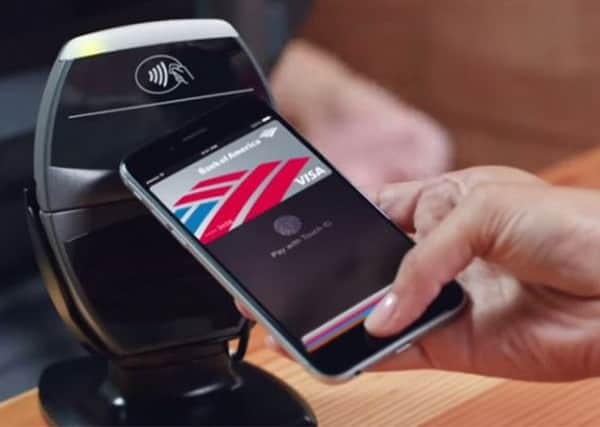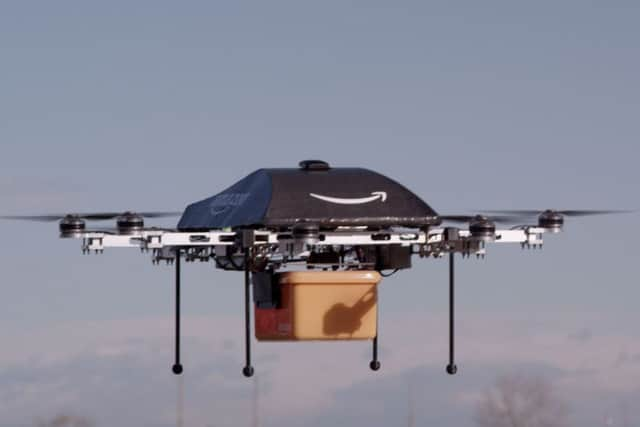Top consumer tech trends to watch out for in 2016


LOCATION-BASED MARKETING
It’s been around for a number of years now, but location-based marketing – technology which takes advantage of to tailor ads to wherever you are – is set to become more exacting. If you search for Thai restaurants in Edinburgh, the adverts displayed are more likely to reflect your search history.
Location-based marketing also makes it easier to browse for more of the things you like and less of what you don’t. But Professor Buchanan warned that such precision isn’t necessarily to our benefit.
Advertisement
Hide AdAdvertisement
Hide Ad

“There are more than 120 advertising agencies who are signed-up to AdChoices [an ad programme used by Google],” he said, “and who work with clients to push targeted marketing to the user. It’s a worrying technology, especially as you have Google tracking you all the time. Adchoices is almost impossible to turn off - it’s spying on you, without you having any control.”
CONTACTLESS PAYMENT
This year also saw the release and development of two wireless commerce systems internationally, Samsung Pay and Apple Pay. Despite slight differences in their operation, the basic premise allows customers to pay for goods and services wirelessly in a manner similar to a contactless bank card.
Professor Buchanan added that the two will likely have a “virtual monopoly” on this market due to their ultra-successful Galaxy and iPhone ranges of smartphones
Samsung Pay is expected to unroll in the UK in the first half of 2016. At present, Apple Pay is compatible with Bank of Scotland and Royal Bank of Scotland accounts, with no word from Samsung yet.
Prof Buchanan added: “Paper cash and coins are finished as a method of payment. Our phone is part of us, and it is one of the best ways to identify us. The pushing of services to mobile phones is thus part of that move.
“From a security point-of-view, there can be more checking of the users location and with the additional of a PIN number or code or fingerprint scan, they are generally more secure than traditional bank card methods.”
AUTOMATED DELIVERY DRONES
Much ado has been made about the prospect of unmanned, autonomous drones which can be used to deliver household goods or even takeaways. While the project has been discussed for at least the last three years, retailers such as Amazon, Alibaba and even Google have entertained the idea of mail delivery systems with test flights.
Prof Buchanan believes drones to be “a bit science-fiction,” citing the logistical problems of such a development.
Advertisement
Hide AdAdvertisement
Hide AdProposals by Amazon this summer suggested that airspace exclusively for autonomous drones be permitted in the skies above the US, with packages delivered at a height of between 200 to 400ft above ground. With several high-profile technology giants calling for changes in US regulations to allow legislation to enact the existing technology, we may see drones delivering packages from Amazon’s Dunfermline base in the near future.
3D PRINTING
If you don’t like the idea of having your goods delivered to you, have you considered printing them out instead? Like drones, 3D printing is an established concept which has been embraced within the engineering industry. Greater development may be made on a commercial consumer level if important practical concerns are addressed.
“This is a technology which shows so much potential, especially for designers, retail and in tourism,” said Prof Buchanan. “Rapid prototyping allows designers to visualise products [quickly].
“In terms of tourism, it has untapped potential, where tourists could create their own artefacts based on places they have been. The one problem, though, is the usage of the designs, where licence fees would have to be paid.”
MOBILE APP GAMING
With the rise of mobile gaming, the portable market is now worth approximately one-eighth of the UK’s £3.9 billion gaming industry. Scotland’s international presence as the home of Minecraft, Grand Theft Auto and countless mobile gaming development studios is likely to see it flourish in the years to come due to Dundee and Edinburgh’s world-renowned digital expertise.
Prof Buchanan agrees: “The mobile phone has now become our single desktop, where we read email, check Facebook, read the news and so on, and the addition of playing games is just a natural extension of this, especially in our quiet times.
“In general, we don’t need much storage space on computers, and computing power is available on-tap from the Cloud, so the devices we need to access are going back to the early days of computing where the computing resources are provided at the back-end (the Cloud) and the device just becomes a user interface.”